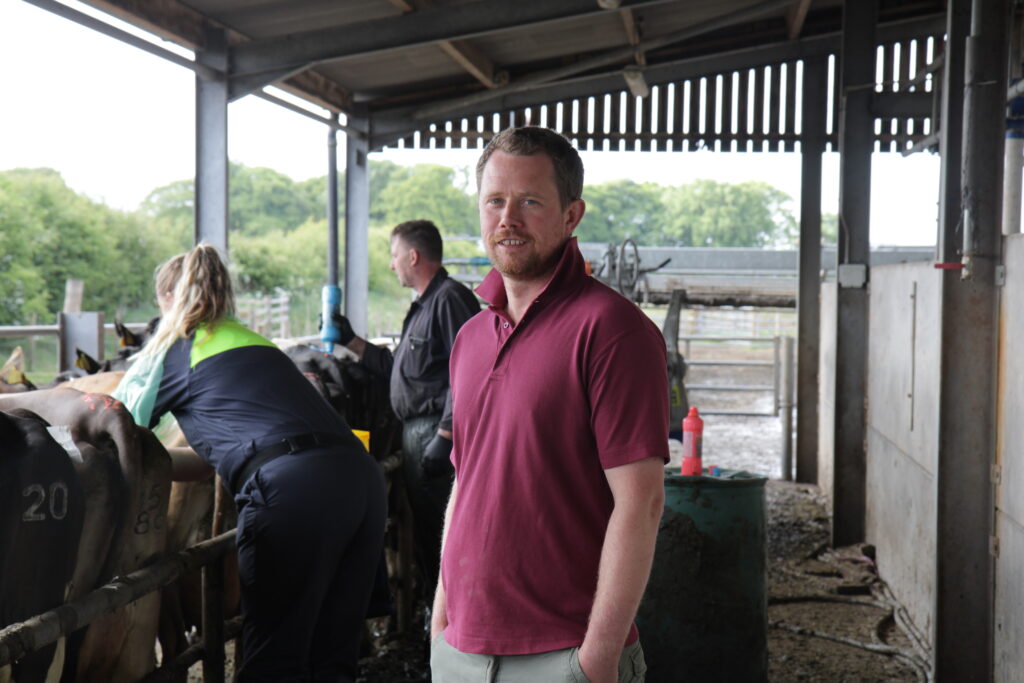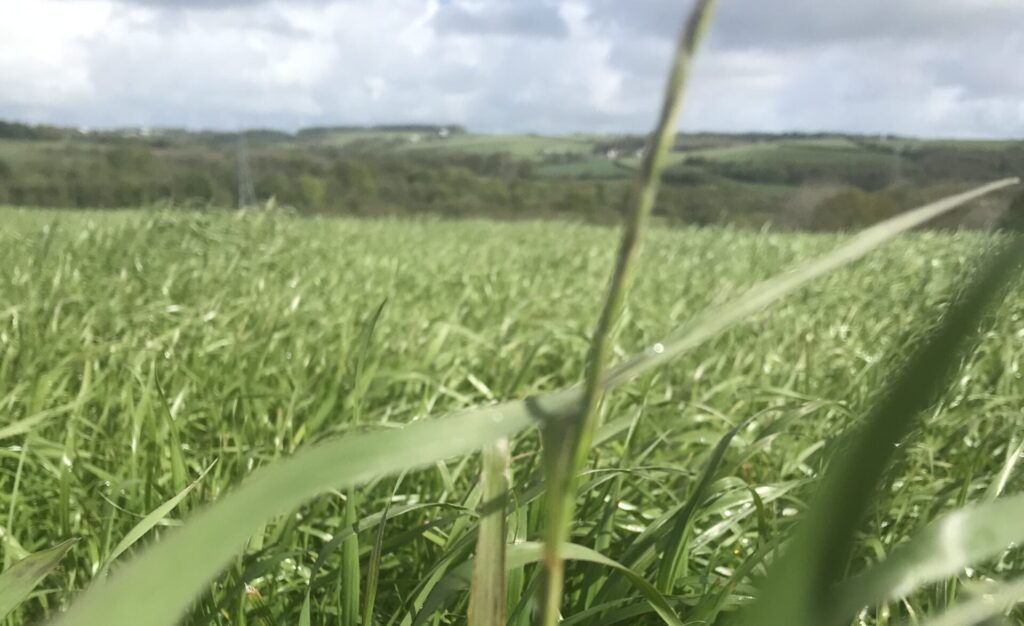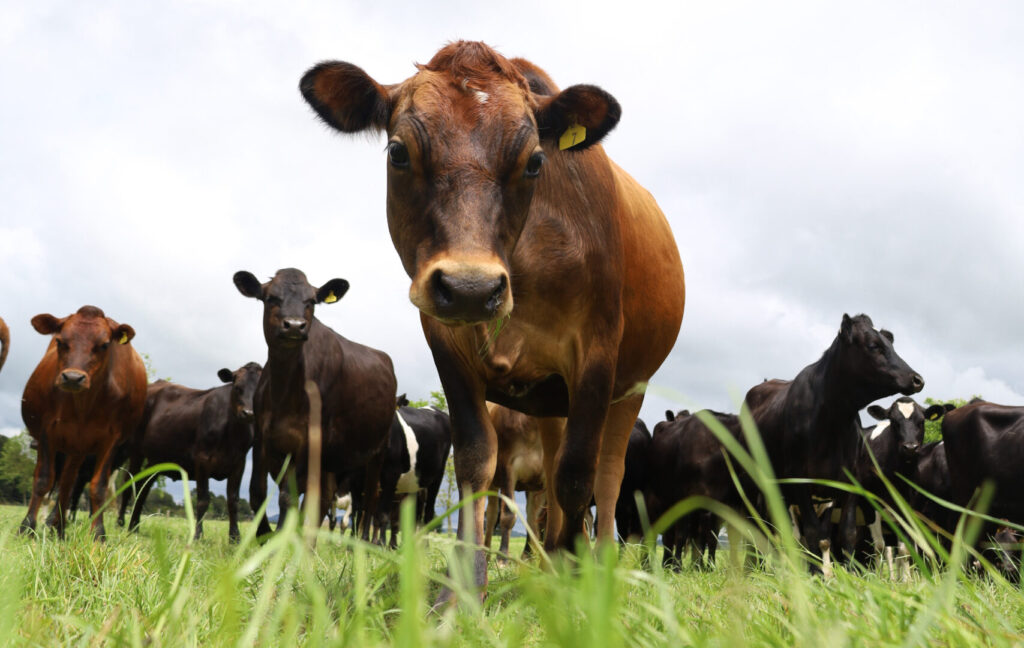LIC is pleased to announce that we’ll be working with North Shropshire College on their Walford campus farm to bring a monitor farm to the Midlands.
It’s an exciting time on the Walford farm as they have just started a transition from all-year-round calving to an autumn block calving herd.
There’ll be two open days each year, where we’ll discuss the progress of the transition, how the farm is performing against targets, and take feedback from open day attendees.
Walford College farm manager Tom Moore took over the running of the farm in 2019 and was given the mandate to achieve a breakeven budget, promote best practice within the industry, and ensure animal welfare is upheld on the farm.
With a cost of production at 66.7ppl and with feed and bedding making up 39% of this, Tom knew that moving to a grazing system would lower these costs. To promote best practise, the monitoring process will see the farm track their progress against key performance indicators for herd fertility, grass growth and covers, liveweight of heifers and cows, production efficiency and production from forage.
With most colleges and universities in the UK focusing on high input systems, Walford College will play a huge roll in training the next generation looking to obtain jobs within the grazing community.
As the cows were never out to graze pasture at Walford College, there wasn’t any infrastructure in place to successfully do so. One of our first jobs was to map the farm and create 18 paddocks on the 63ha milking platform. The paddocks are around 3ha in size, with a couple around 5ha. Each paddock will have four points of access, two off the track and one from each of the paddocks on either side.
Over a kilometre of sand tracks have been put in, linking the 18 paddocks. To preserve these tracks no heavy machinery will travel on them, instead they will move through the farm from paddock to paddock. A ringed water line will also be developed to provide water to the paddocks. The idea of the ringed water line is to increase the pressure at the furthest points and, if there is ever a leak, that area can be isolated and fixed without affecting the cows or the rotation.
Currently there are 154 milking cows on the farm, with a plan to increase numbers naturally to 250 cows. 21 heifers were of weight and age to go to the bull in autumn 2019, and 84 heifers for 2020. The herd was cleaned of all problematic and unwanted cows at the start of the season so there will be very few cows culled.
The current cows have not yet been weighed but we estimate the average cow weight is 700kg. Going forward, the target is 550 to 600kg. The bulls used for mating this season are Sierra, Hammer, Beaut and Kelsbells. These bulls have been used for their fertility and milk solids production. To keep the herd in the calving block once it is achieved, the extra fertility is needed. The additional milk solids will allow the farm to move milk buyers in the future if they choose, and retain profitability.
The planned start of calving for the block is 13 August 2020, with mating started on 4 November 2019. Moving the herd into a single block will happen over two years. In the first year the herd will see two breeding blocks. The main block will be in the autumn, starting in November and running through into February, and the second block will be in August. In the second year the autumn block will be shortened to reach 12 weeks and the August block will be rolled over to be mated at the beginning of the November block.
The rising two-year-old heifers for the 2019 season have been split according to age and weight. The oldest and heaviest were put forward for mating, while the younger and lighter heifers will be mated in November 2020 with this year’s rising ones.
This spring will see the training of the cows to graze lower in the sward as they are turned out for the first time. The plan is to have all the cows out grazing for some time from the start of turn out. The high yielding cows will be out to graze during the day and in at night with feed in the parlour. This is to ensure that they can maintain their yields without losing body condition.
The lower-yielding cows will be out on grass all the time with feed in the parlour. All cows will be turned out onto fresh grass every morning. It will be the role of low yielding cows to then clean up these paddocks in the evening while the high yielding cows are housed. Depending on the residuals that can be obtained we will decide whether the low yielding cows are provided with any additional feed. Our goal is to be obtaining consistent residuals of around 1600kgDM by the end of the 2020 grazing season.
We were planning our first open day at Walford College Monitor Farm on 7 April, but under the COVID-19 restrictions, took the responsible decision to cancel it.
However, you can keep up-to-date with the exciting work going on across the farm by watching our Walford webinar series.




